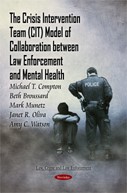Getting Started
The Crisis Intervention Team Model consists of several core elements that are categorized into three areas: ongoing elements, operational elements and sustaining elements. These core elements are designed to apply to various types of communities found around the state. Their implementation and adherence are central to the success of a program’s goals. Loosely summarized below, the core elements encompass and promote:
- Strong partnerships and community ownership among law enforcement, mental health professionals, advocates, people living with mental illness and their families, and other community members and leaders.
- Agreed upon Policies and Procedures within mental health and law enforcement agencies that accurately reflect the purpose, nature, and scope of work.
- A common understanding of key roles and responsibilities in the crisis response system including mental health services, emergency responders, law enforcement, and other resources that can help people during a mental health crisis.
- Training for law enforcement officers and public safety telecommunicators that help prepare them to respond safely and compassionately to people in crisis and link them to mental health services.
- Effective utilization of emergency mental health services which ideally includes 24/7 access to care for community members and law enforcement referrals.
- Evaluation of the program through the collection of information on crisis contacts and all other available data sources to continuously measure the impact, outcomes, and efficiency of the program.
- Public recognition for team members to provide a sense of accomplishment and ownership for their program, and Outreach to other communities to promote and assist them with their efforts to implement the core elements so that they too may benefit from its organizational structure.
The documents below will assist you with understanding CIT and how to best implement the model:
Crisis Intervention Team (CIT) Programs: A Best Practice Guide for Transforming Community Responses to Mental Health Crises
Developed by CIT International. The first comprehensive guide for communities to utilize best practices for starting and sustaining CIT programs.
CIT Toolkit
This tool kit is a step-by-step instruction booklet of the necessary parts and pieces that must be in place in order for Crisis Intervention Team (CIT) program and training be the most successful from the law enforcement perspective and the mental health perspective.
2022 CIT Core Elements
In September 2004, the Ohio CIT Coordinators Committee in conjunction with the Criminal Justice Coordinating Center of Excellence (CJ CCoE) developed the Expert Consensus Document: Core Elements for Effective Crisis Intervention Team (CIT) Programs. The CJ CCoE, along with a group of Ohio partners and stakeholders, recently completed an update and revision to the core elements document. Building upon program and training elements within the CIT core elements, the updated version provides guidelines, standards, and common terminologies to assist local CIT programs with fulfilling core elements.
To request Ohio CIT pins, lapel bars, patches, and Quick Reference Guides, contact Luke Russell at NAMI Ohio at luke@namiohio.org.

New to Ohio CIT Coordination? Contact Ashley Eads at aeads@neomed.edu to receive The CIT Model of Collaboration between Law Enforcement and Mental Health book, Ohio CIT DVD, and information on how to be added to the statewide CIT Coordinator email list.
Contact
Phone: 330.325.6861
Email: cjccoe@neomed.edu
Ohio Criminal Justice Coordinating Center of Excellence
A NEOMED Coordinating Center of Excellence


